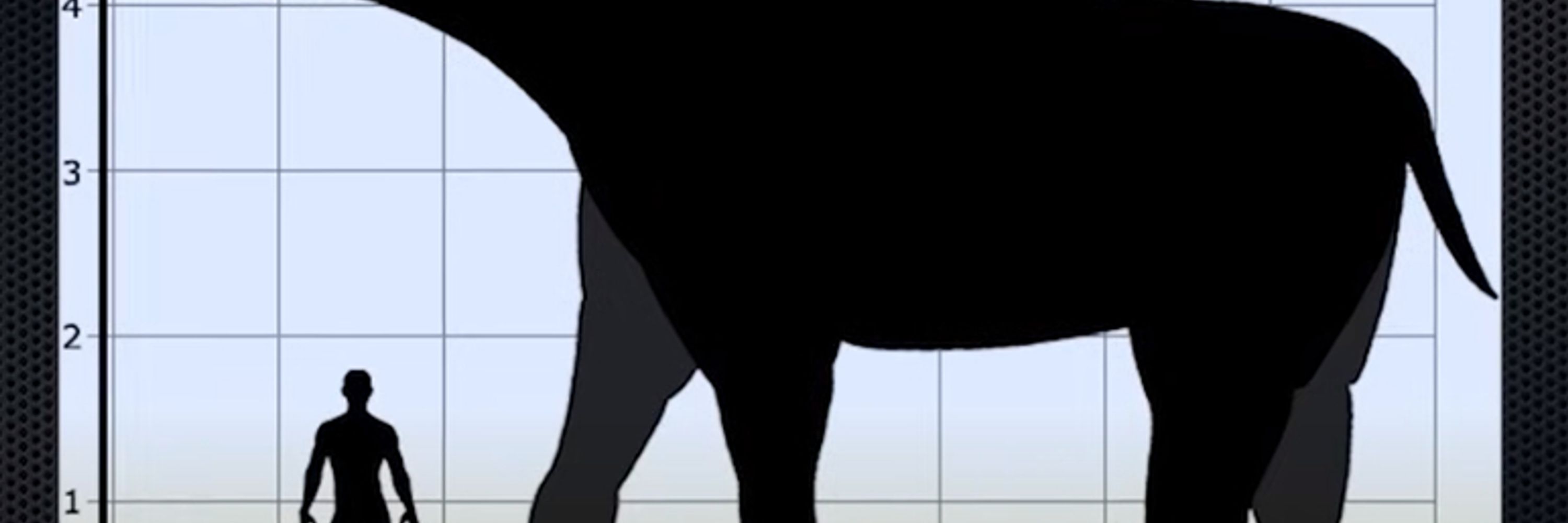
Advocating for all herbivores and megaherbivores, forest structures, vegetation structures, fast-track structural renovations, restoring ungulate migrations throughout all of Europe and beyond.
We’re prepping a Europe-wide study for spring/summer 2026 to explore how trophic #rewilding influences #saltmarsh resilience.
Let us know about salt marsh areas with large grazers, e.g. water buffalo, deer, moose, wild boar, cattle, sheep,etc.



We’re prepping a Europe-wide study for spring/summer 2026 to explore how trophic #rewilding influences #saltmarsh resilience.
Let us know about salt marsh areas with large grazers, e.g. water buffalo, deer, moose, wild boar, cattle, sheep,etc.
🆓 doi.org/10.15184/aqy...
🏺 #Archaeology
NEANDERTHALS VS THE ICE AGE - 100,000 Years of Cold ~ with PROFESSOR TRENTON HOLLIDAY @trentonholliday.bsky.social
@lemoustier.bsky.social
#evolutionsoup #evolution #paleoanthropology #science #fossils
👇🏿👇🏽
youtu.be/M633cJCT3G4
NEANDERTHALS VS THE ICE AGE - 100,000 Years of Cold ~ with PROFESSOR TRENTON HOLLIDAY @trentonholliday.bsky.social
@lemoustier.bsky.social
#evolutionsoup #evolution #paleoanthropology #science #fossils
👇🏿👇🏽
youtu.be/M633cJCT3G4

Ecology meets Mythology: Medieval stories and songs uncover India’s ecological past. Link to paper: besjournals.onlinelibrary.wiley.com/doi/10.1002/... (click "MR" for Marathi abstract). @dhmsu.bsky.social
@msunatsci.bsky.social
1/n

Ecology meets Mythology: Medieval stories and songs uncover India’s ecological past. Link to paper: besjournals.onlinelibrary.wiley.com/doi/10.1002/... (click "MR" for Marathi abstract). @dhmsu.bsky.social
@msunatsci.bsky.social
1/n





A semi wild landscape.
Home for cattle and sheep as well as a wealth of other things, from yellowhammers to lichens, from voles to fungi, from ravens to dor beetles.
Food and the wild, in the same place, at the same time.
#dartmoor

A semi wild landscape.
Home for cattle and sheep as well as a wealth of other things, from yellowhammers to lichens, from voles to fungi, from ravens to dor beetles.
Food and the wild, in the same place, at the same time.
#dartmoor




Please show your support by signing the below!
c.org/KtYyZB8dHk

Please show your support by signing the below!
c.org/KtYyZB8dHk
Read more here: www.pan-europe.info/press-releas...

Read more here: www.pan-europe.info/press-releas...
And BTW - This 6 acre property I've been managing and rewilding as a nature reserve for the last 10 years is going UP FOR SALE. I'm posting this here because I would rather see it go to a nature friendly person, and not fall into the wrong hands. 1/2




And BTW - This 6 acre property I've been managing and rewilding as a nature reserve for the last 10 years is going UP FOR SALE. I'm posting this here because I would rather see it go to a nature friendly person, and not fall into the wrong hands. 1/2
www.sciencedirect.com/science/arti...

www.sciencedirect.com/science/arti...

It seems that humans with a high plant content in their diet have priority over all wild herbivores, whether mammal, avian or invertebrate.
It seems that humans with a high plant content in their diet have priority over all wild herbivores, whether mammal, avian or invertebrate.

They regulate climate, purify water, house 80% of terrestrial biodiversity & sustain 1.6 billion livelihood.
Find out how we measure forest health before it's too late👇
link.springer.com/article/10.1...
#JFR #Forestryresearch
They regulate climate, purify water, house 80% of terrestrial biodiversity & sustain 1.6 billion livelihood.
Find out how we measure forest health before it's too late👇
link.springer.com/article/10.1...
#JFR #Forestryresearch
I suggest @ipes-food.org get back in their tank and do some proper thinking.
Then maybe we might make some progress.
⚠️ Regenerative Agriculture
⚠️ Tropical Agriculture
⚠️ No Additional Warming
⚠️ Bioeconomy
⚠️ We Feed the World
⚠️ Efficiency Is Enough
Remember: industrial food systems drive 1/3 of global warming & 40% of petrochemicals.
From regenerative agriculture to ‘efficiency is enough' and ‘we feed the world’ narratives - check out these 8 big greenwashing terms ahead of COP30 👇
📝 by @rachelsherrington.bsky.social & @hazelhealy.bsky.social
www.desmog.com/2025/10/26/b...
I suggest @ipes-food.org get back in their tank and do some proper thinking.
Then maybe we might make some progress.

This virtually uncontrolled demolition frenzy jeopardizes Europe's renovation plans, impacting climate, nature & tenants
correctiv.org/en/europe/20...

This virtually uncontrolled demolition frenzy jeopardizes Europe's renovation plans, impacting climate, nature & tenants
correctiv.org/en/europe/20...
If it's not, then please watch this excellent video from Bill Sutherland and give the Wyoming Migration Initiative a follow @wyo-migrations.bsky.social
Restoring herbivore migrations will fix a whole heap of problems.
www.youtube.com/watch?v=QGzQ...

www.youtube.com/watch?v=QGzQ...



